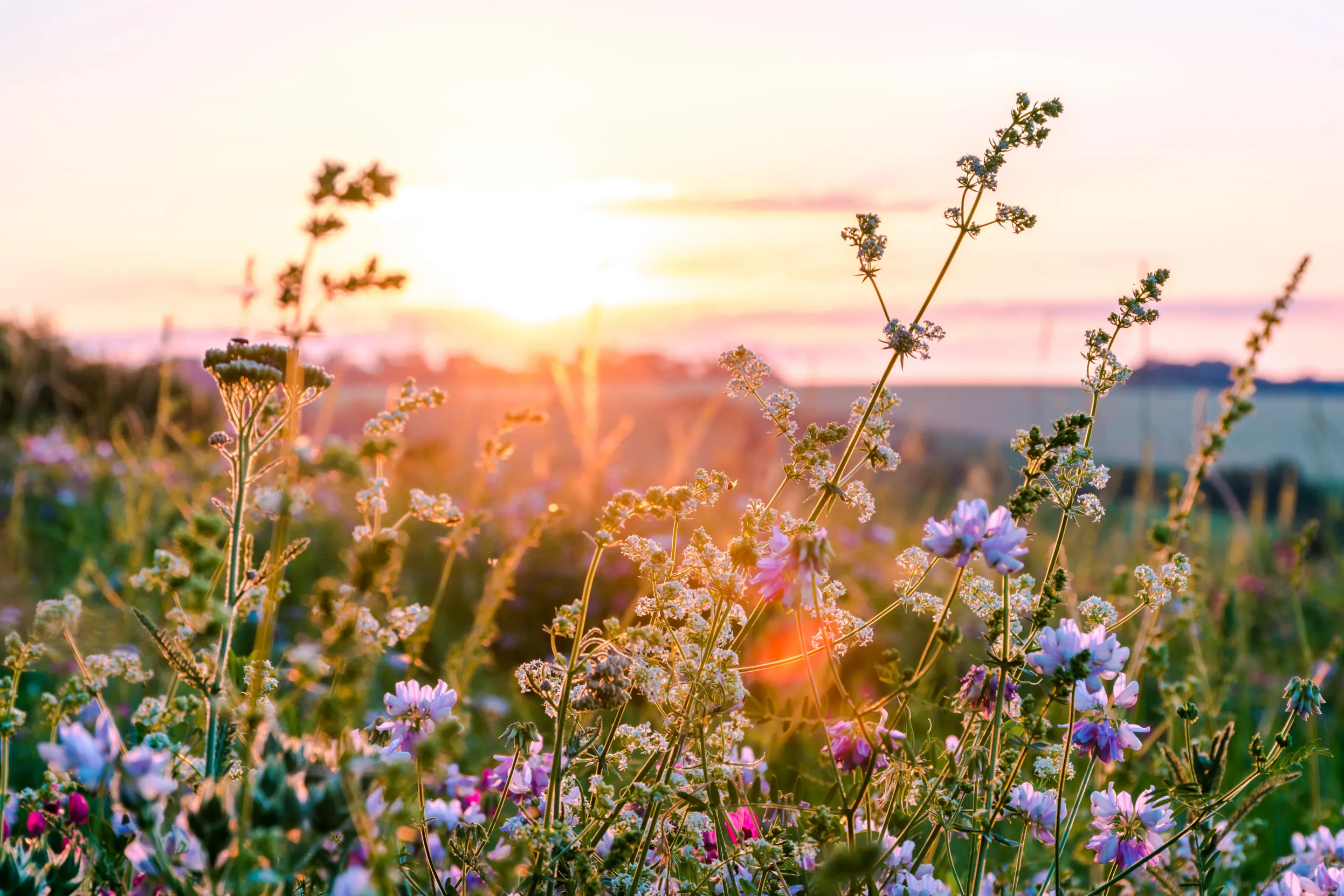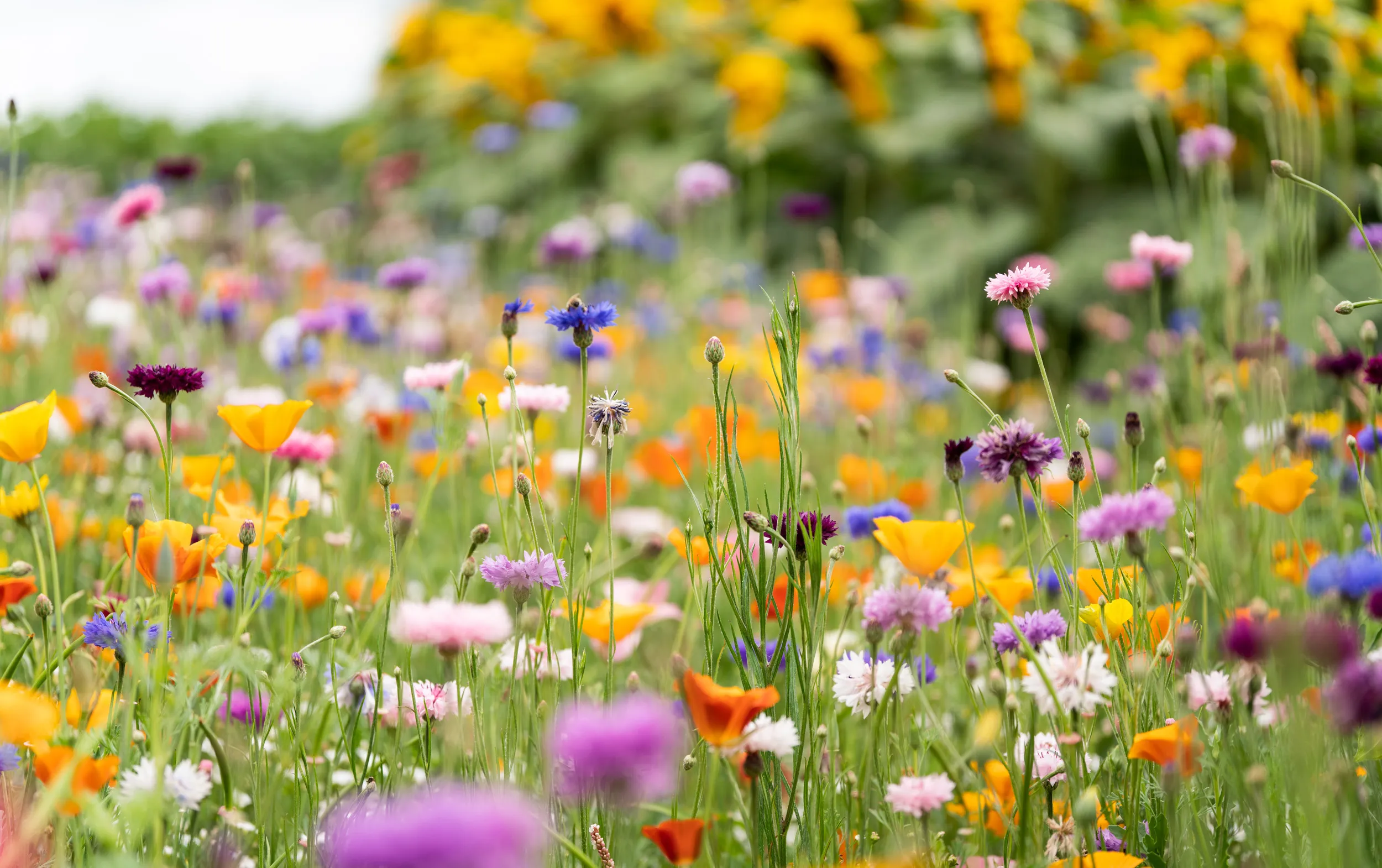
Our guide is full of ideas for welcoming nature into your outdoor space. Put a few of our tips into action and your garden will be buzzing with wildlife in no time.
Learn how to rewild your garden and create a mini jungle for beetles and other small creatures to wander.

This activity can be completed as part of Families Wild Challenge or Nature on your Doorstep and counts as the Helping Nature activity Let it grow.
Mowing your lawn less saves you time and makes a big difference to the wildlife in your garden. Create a mini jungle for beetles and other small creatures to wander and where Sparrows and Goldfinches can come to feed on the seeds.
The grasses will set seed, wildflowers can bloom and provide nectar, and the longer stems will create a sheltered microclimate. Avoid using strimmers too, as they can injure Hedgehogs, frogs and insect larvae. If you can resist mowing your lawn until late summer, this will mimic the hay meadows of old.
It could be all of it, or just a section. Even mowing less frequently will help rewild your garden, as well as setting your mower to a higher cut. Make sure that areas surrounding bird baths and feeders are kept mown, to precent long grass providing shelter for predators.
There are several different lawn management regimes you can try. Whatever you choose, try to keep it roughly the same each year so your plants can set seed and thrive.
As a first step, just let your lawn grow naturally for a month in May or June, and mow as you normally would outside that time. This will allow daisy and clover to flower, and you'll see pollinators enjoying your lawn.
If you want to have a bigger impact for wildlife, don't mow your lawn at all until early July. Then mow as normal until the grass stops growing in late autumn. This is the kind of meadow where you can plant spring-flowering bulbs like crocus and early daffodils. As they die back you could have cowslips coming through along with bulbs such as snakes head fritillary.

Our guide is full of ideas for welcoming nature into your outdoor space. Put a few of our tips into action and your garden will be buzzing with wildlife in no time.
Mow your lawn once in late March or early April and then leave it until August or September before mowing once or twice until the end of the autumn growing season. This will mimic the old hay meadows and will suit flowers like Corn Marigold and Bird's-foot-trefoil. Letting your grass grow until late summer provides shelter and delights for your garden critters.
Mowing a border around your blocks of longer grass, or paths through the middle can make your long lawn look smart. These could be straight paths in a regular pattern, curving paths or a mini maze. Let your imagination run as wild as your garden!

To really add a splash of colour to your wild lawn, why not sprinkle some wildflower seeds through the lawn in autumn? Come spring and summer, they'll burst into colour!
This is a Nature On Your Doorstep activity which can also be completed as part of Wild Challenge. Want to take on the challenge and go for Gold? Each action you take for nature brings you a step closer.
This activity can be completed as part of Families Wild Challenge and counts as the Helping Nature activity Let it grow.